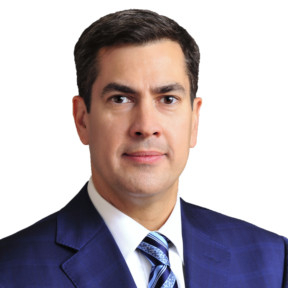
Entering 2018, one of our key views was to anticipate rising financial market volatility. Since then, VIX shocks, threats of trade tariffs and bigger day-to-day swings in equity markets appear to suggest a transition to a different market environment compared to the last couple of years.
When volatility increases and the momentum fades, investors may start to look instead for value assets with attractive yields. But in fixed income, with rates still low and credit spreads tight, that is easier said than done. Where might investors look for value? And how long is this volatility set to last?
Three ideas for value
Three ideas for value are top of mind for us:
The first is simply to avoid those instruments that are most overvalued. The current environment favours playing a bit of defence in anticipation of better valuations to come. Often, that would suggest government bonds. But government bonds have provided limited stability and no real diversification during the weak periods for risk markets in the year-to-date: as of April 12, the total return from the US 10-year Treasury was -3.0 per cent, for example, and for the 30-year it was -4.9 per cent. We think this trend is just getting started and, coupled with low yields, it makes most nominal government bonds unattractive.
Where do we see value? One place is in short-duration fixed income. I’m often reminded that flat yield curves hold the seeds of their own demise because they strongly incentivise investors to shorten maturities. At the start of the year, Erik Knutzen reminded our Asset Allocation Committee that, with the Federal Reserve raising rates, cash is again becoming an investable, even competitive asset class for dollar-based investors. In our latest AAC Outlook, we note that rising rates also create pockets of value in bank loans, short-duration investment grade or high yield bonds, and floating-rate securities. US dollar investors, at least, no longer need to invest for 10 years in seeking a 3 per cent yield — that is now achievable with diversified short-duration portfolios.
Our third idea is to focus on non-US asset classes. For US dollar investors this is a positive dynamic. Opportunities such as Mexican local-currency debt offer higher real yields than the relatively tight US investment grade and high yield markets. Also, because of the interest-rate differentials that are a by-product of the Fed hiking against a backdrop of stable policy from the ECB, US dollar investors currently stand to gain some 3 per cent per year just from hedging euro exposure back to dollars, making even European high yield a relatively attractive asset class. For the same reason, however, this is a negative dynamic for euro-based investors: there is less incentive to invest in dollar assets on a hedged basis because of the 3 per cent cost of hedging the dollar exposure.
Monetary policy is the big driver of volatility
Those rising currency-hedging costs and their potential knock-on effects through investment flows are relevant to our second question: How long might this volatility last?
Right now, the big driver of volatility is US trade policy. We think that is likely to diminish, however. Like Joe Amato, I’ve been travelling in China and Southeast Asia recently and have found investors relatively sanguine about this risk, recognising that significant disruption to the global trading system is in no one’s interest. We are witnessing a very public negotiation rather than policy changes likely to be implemented.
It is critical to recognise that volatility is also rising because of real changes occurring in markets, however. Rising currency hedging costs, just like rising rates and widening Libor-OIS spreads, and even the underperformance of investment grade relative to high yield or BB-rated credits relative to CCCs, have their roots in a simple but powerful factor: the Federal Reserve tightening policy by raising rates and reducing its balance sheet.
Trade policy, US politics, Brexit, elections in the emerging markets — all will have their impacts. But the big driver of volatility is normalisation of central-bank policy, and that will remain in play for the foreseeable future. Other central banks are likely to join the Fed over the coming 12 to 18 months, and until normalisation is visible or close, we believe we are in an environment where fixed income portfolios may benefit from a tilt toward areas of modest relative value rather than positioning for dramatic changes in these markets.
— Ashok K. Bhatia, Senior Portfolio Manager — Multi-Sector Fixed Income, Neuberger Berman




